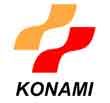Anime News
|
Toei Animation ERP Adoption Progress Report Date: 10/17/2005 |
|
In September, Japanese CIO Magazine conducted an in-depth interview with Toei Animation on the current state of their business. Toei is one of the few anime companies (among 440 nationwide) that will handle whole development on a project from original conception through production. Beyond this they will manage all copyrights on certain works. To better facilitate their business model, an ERP (Enterprise Resource Planning) system was introduced within the company in April of this year. Under ERP, profits related to a specific project can be estimated in realtime. In the world currently, among things attributed as symbols of Japanese culture, animation ranks up there with Cherry Blossoms, Sushi and Sumo Wrestling. The industry has influenced Hollywood movies and film production made in other countries. About 60% of TV animation broadcast globally is currently made in Japan now. Japanese governments down to the muncipal level have aided in the promotion of this business. This said, the industry as a whole still currently endures structural and profit recuperation problems that are easy to miss in the face of such international success. TV animation is especially difficult with companies struggling to get back the amount invested into episode production. This "Deficit Structure" has always been a big challenge for Toei which got it's start in TV anime production in the black and white days. There is much uneasiness of the industry's future development in the Japanese business community currently although Toei Animation is one of the major success stories that can always be counted on to obtaining high profitability because of their prompt approach on the copyright business also. One of the matters of concern is entry into the copyright business from another type of business. More Toy manufacturers, media related companies, etc. have entered the copyright business related to animation one after another. The market is so flooded, terrestrial broadcast TV has little to no room for the re-broadcast of already aired shows with about 70 animation series broadcast weekly. Then there are the problems related to finding new talent and maintaining work for those in the industry's lower levels. Japan's falling birthrate is said to cast a dark shadow on animation industry, and lately, the the effects of fewer children being born have been especially pronounced in the toy market. Diversifying the spread of contents in different media formats (mobile phone, PDA etc..) remains another challenge according to Toei's Shi Nishi who heads their Survey and Accounting divisions. "It will be necessary to advance effective contents development that stimulates the buying intentions of a viewer by the diversification of preference while securing profit in the future." Toei has worked on the production of around 8,600 episodes of animation to date. They sought to maximize the value of these "existing assets" while focusing on their future business development with the related costs in both time and money spent on developing new contents. While examining this issue, the decision was made to adopt an ERP system which could analyze total holdings sales data worldwide on a real time level. A special internal accounting system was employed by Toei in 2000 when it first went public, however, the company was powerless to accurately gauge the asset value of different works and was only able to record total sales. The problem here was compartmentalization on a number of levels represented by many divisions and many properties. The situation existed where it was difficult to track sales related to specific works and goods (ie: only the overall division sales were seen). Thusly, Toei could not accurately gauge the value of specific properties. Three requirements were sought in an ERP system. The first was real time accounting data including sales information on each contents property; secondly, high management accounting functions; and thirdly an automation of the profit sharing obtained by the copyright was wished for. The third was especially a problem that the company needed to address immediately. Generally, profit generated by the copyright is distributed based on the publisher that has already serialized the original manga in a magazine for instance. The systematization of this profit sharing end of business was indispensable to prevent the work load from becoming a bottleneck on the business which routinely had different divisions overlapping one another inefficiently. Toei reportedly invested 400 million Yen on their backbone ERP solution MySAP provided by Germany's SAP Co. Toei was especially drawn to the system features such as multi currency and multi language support since the proportion of sales in foreign countries is high for the company. Contents consumption are is measured by three axes within MySap: "Region", "Multi Use", and "Time". Now, Toei is able to be determine profits returned by individual works, in multiple media formats and in what part of the world this is all happening in real time with a high degree of accuracy. What's more, the market characteristics of each country can be examined. One example given was "Tomorrow's Narja" which enjoys popularity in China but is not considered highly successful in Europe or Japan. Among other research they've uncovered using the software relates to anime sold on DVD. DVD Box releases were widely thought to be bought primarily by men 20-30 years old so far. However, when 10,000 DVD's of a certain work were sold by limitation, it is understood that women accounted for 40 percent or more of buyers. Toei Animation paid attention to this data and when DVD boxes have been marketed since then promotional activities have been advanced in the Shibuya area of Tokyo which is highly popular with women. After this move, they succeeded in the collection of 15,000+ reservations even though the DVD box was a high priced commodity of about 90,000 Yen. One of the bigger results of implementing the system is being seen in their business development in North America as of December, 2004. Until then, rights were widely bought as a package deal with licensors getting both TV broadcast and DVD marketing privileges within the market for example. Now of course, Toei itself has a corporate presence in North America and so the licensing out of various properties and rights under it's own label or to others can be more decisively evaluated. Consequently, it is said that this route change is surely connected with earnings. |
| Source: Anime News Service |























